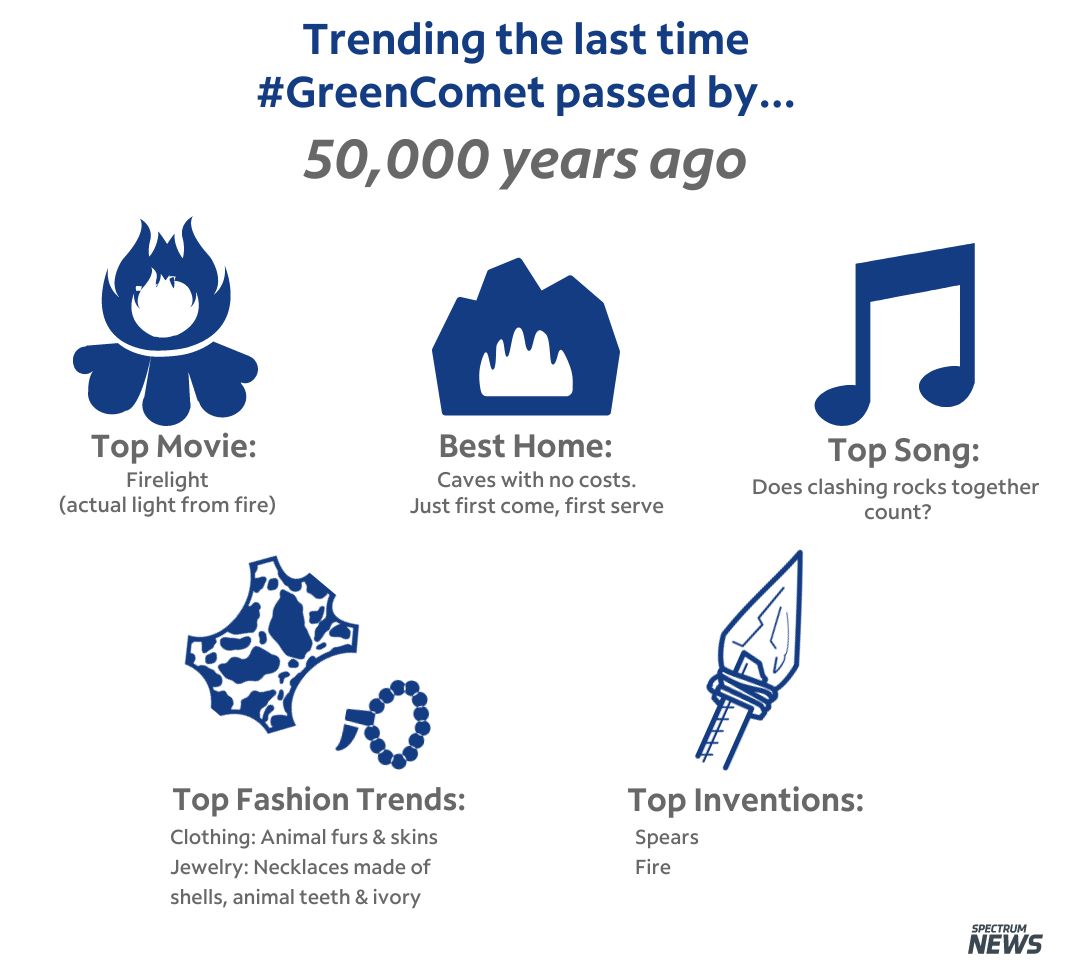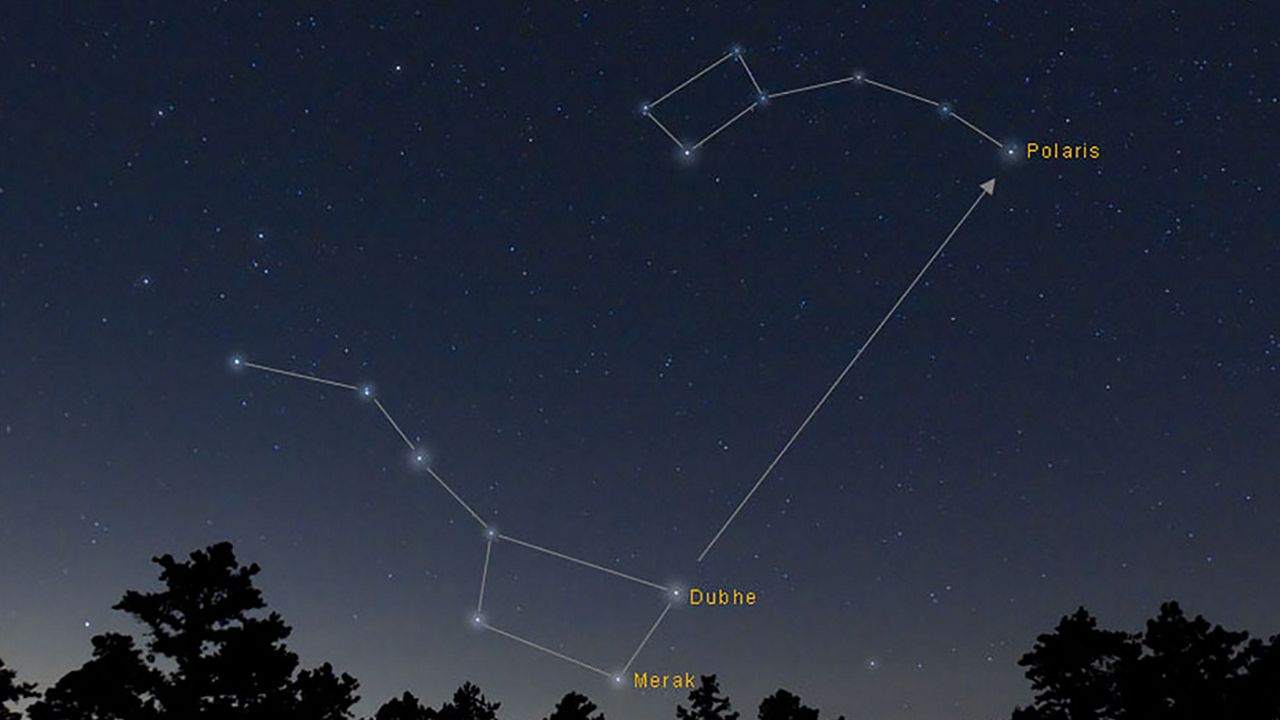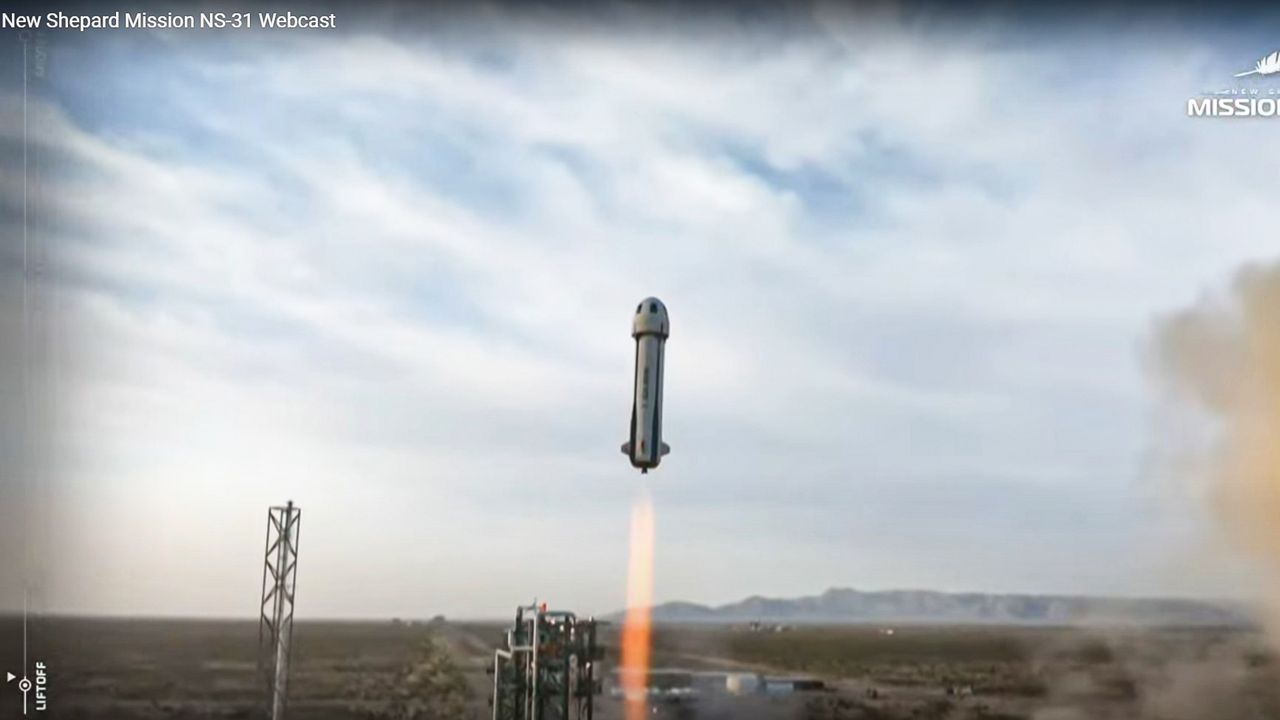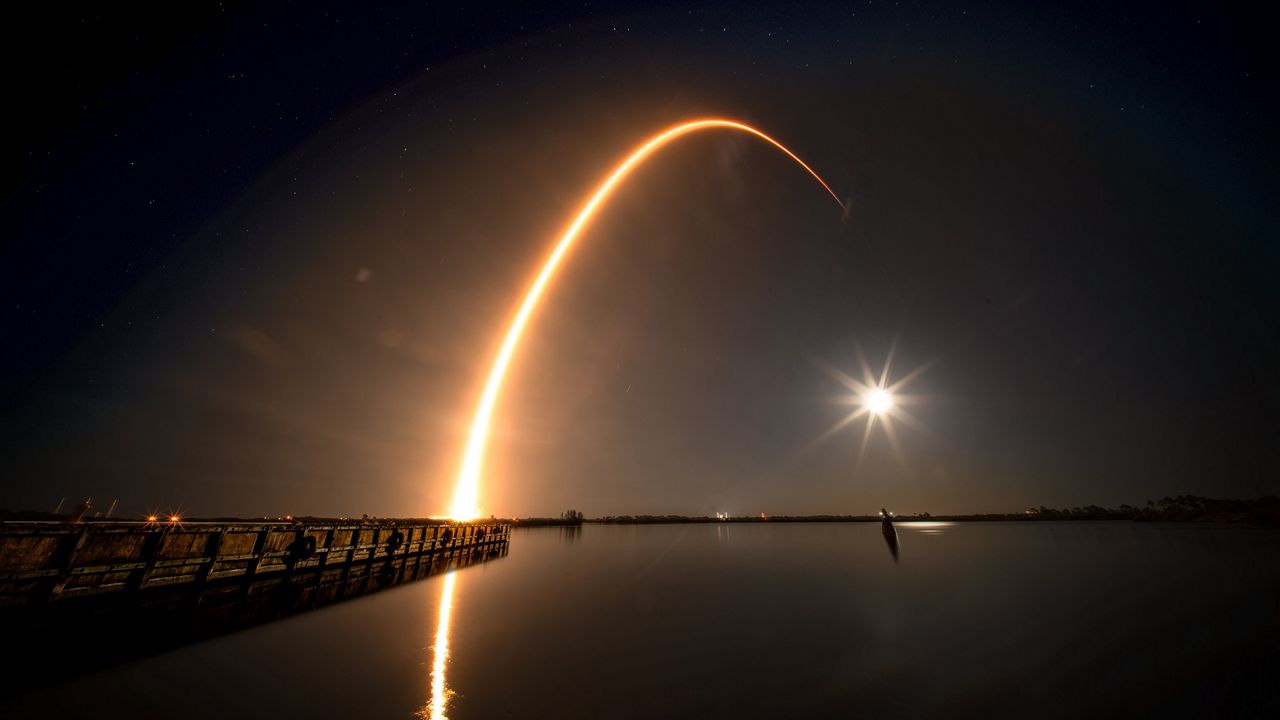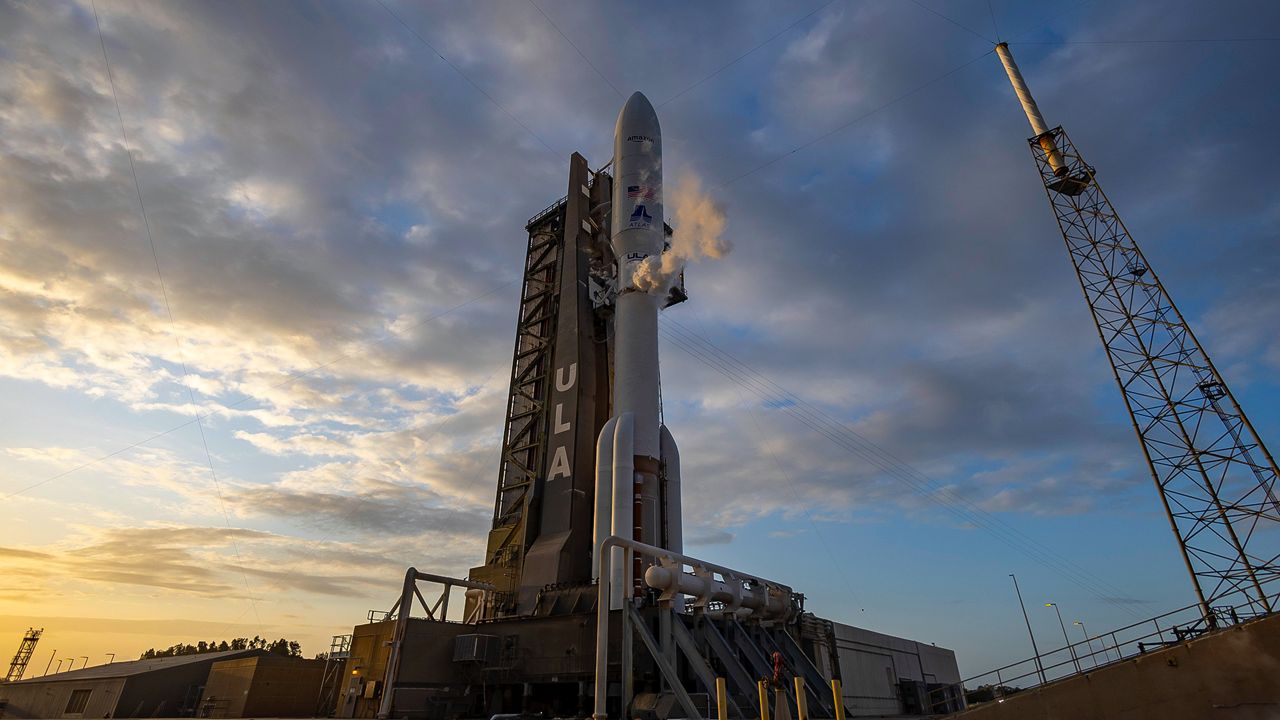Statewide — The celestial visitor, the famed green comet, is set to make an appearance and a local astronomer has some advice on how to view it.
What You Need To Know
- A local astronomer shares some tips on how to view the green comet
- The comet will make its closest approach to Earth on Wednesday, Feb. 1
- Comets, asteroids and meteors: What's the difference? See below
- RELATED coverage:
The green comet, officially known as C/2022 E3/ZTF, might not be as bright to the naked eye as many expect, said Jonathan Sabin, the president of Local Group of Deep Sky Observers in the Tampa Bay area.
But Sabin has some tips that will help those hoping to spy on this cosmic guest, which last visited the Earth around 50,000 years ago. (And the flying ball of ice was only discovered in March 2022, stated NASA.)
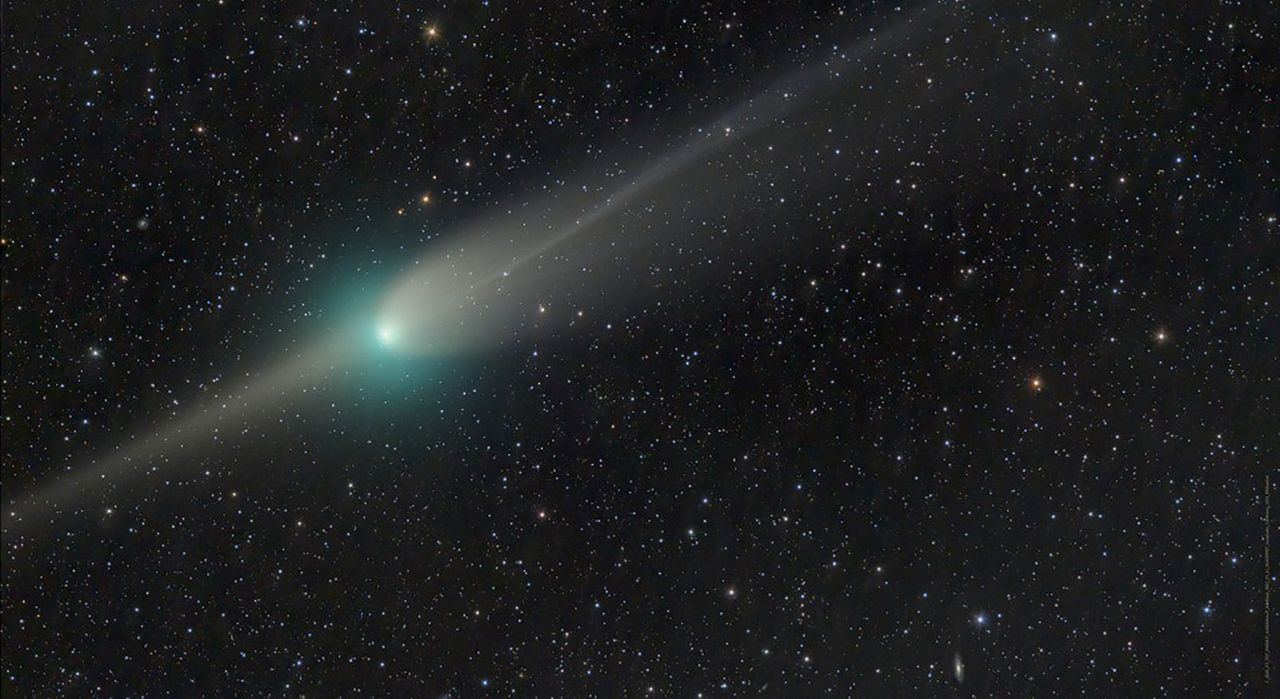
“So the further an observer can get from bright lights, the better. That said, even under the darkest skies Florida has to offer, it's still not going to be ‘obvious’ in the night sky. People will need to know where in the sky to look, and for many people, it'll appear like a dim smudge of light,” Sabin explained.
So expect nothing extremely bright in the night sky, like the Hale-Bopp comet was in 1997, he suggested.
“… This one is going to be (despite all the press it's receiving) quite difficult (to see). That's not to say people shouldn't try to look. But it's not going to ‘jump out’ at them like some of the great comets of the past few decades,” said Sabin, who has been a member of Local Group of Deep Sky Observers since 1983 when it was formed and has been president of it since 2016.
The comet will make its closest approach to Earth on Wednesday, Feb. 1.
He said that the green comet will appear throughout the evening in the northern sky, between the Big Dipper and Little Dipper. As each night goes by, it will appear higher in the night sky, until it will be overhead and “very close to the bright star Capella,” on Sunday, Feb. 5, according to Sabin.
For those who want to capture this emerald sight, Sabin goes over what Floridians will need. At the very least, a camera that can take time exposure photos of at least 15 to 30 seconds and a tripod to keep the camera steady.
Yet, Sabin offers a warning to those in the Sunshine State who think they might get something stellar.
“As long as the photo is pointing in the general direction of the comet, they'll likely be able to capture at least a 'fuzzy blob' in the photo,” he said. “I'll note that a number of camera phones (including recent models of the iPhone) have a 'night mode' that offer a surprisingly respectable image when shooting objects in the dark.”
And another thing that Sabin shared: Unlike shooting stars that whizz on by, comets are “stationary.” Yes, they are moving, but “when you look at a comet, it'll seem for all intents and purposes to be motionless,” Sabin said.
So while looking at it through a camera, telescope or binoculars, you have to make adjustments to it to follow its path since it will change position because of Earth’s rotation, stated Sabin. Very much like looking at the moon, it is in motion.
And for those using a telescope or binoculars, Sabin also has some suggestions.
“Know where to point your equipment. The more magnification you use, the narrower the field of view, so the more important it is to know precisely where to look. Binoculars are a great tool as they offer the widest field of view, if they're using a telescope, definitely start with an eyepiece that gives the lowest magnification,” he said.
For many, the once-in-a-lifetime visit from the green comet might be the catalyst to spark an interest in astronomy.
For Sabin, it was a trip at a very young age.
“My interest in astronomy began when my parents took me to the Hayden Planetarium in New York City when I was 5 years old. That interest hasn't abated in the 57 years since!” he shared.
